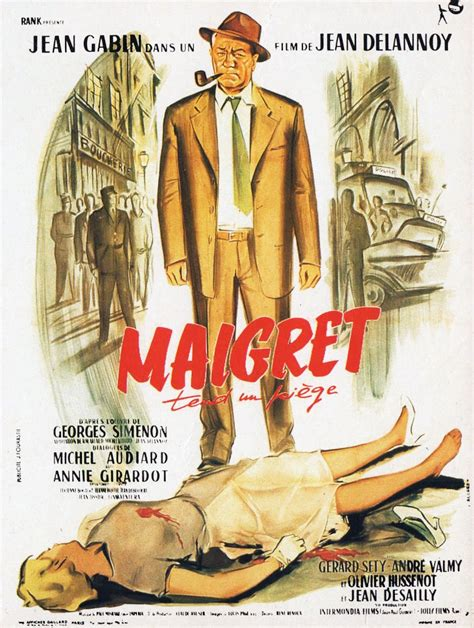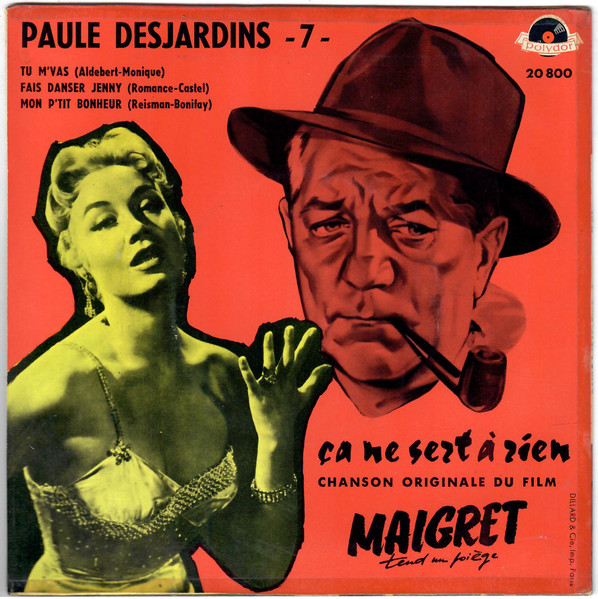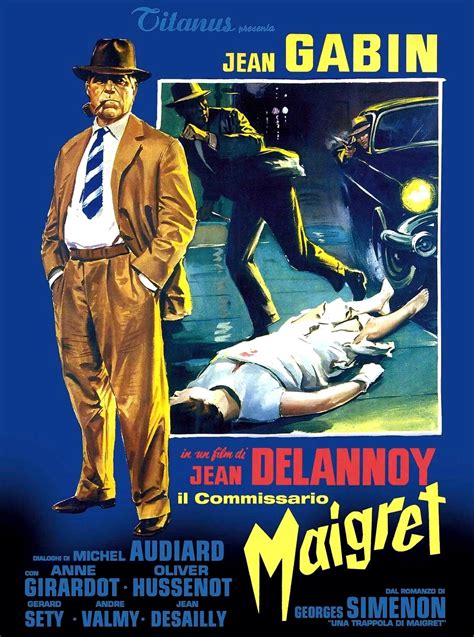REVIEW: Maigret tend un piège / Maigret sets a Trap 1958, a Jean Gabin extravaganza
Meanwhile, an inspector follows a suspicious woman who was far too interested in the crime re-staging. She meets a gigolo at the "La Cucaracha"-bar and spends an hour at the hotel with him. Following her to her fancy apartment in the suburbs, he reports to Maigret and our Commissaire can establish a connection between her, the female house owner of the house where the killer vanished, and the butcher who has his shop and workspace in the house (and whose knife had been used in killing #4).
The failed murder attempt results in a lead as the victim had been able to rip a button off the killer's jacket. The fancy button can be identified as belonging to a fancy jacket sold to the deceased husband of the homeowner. Coincidentally, the son is married to the suspicious woman from the paragraph above, and his flat had just been robbed, with exactly one jacket being stolen.
Maigret interrogates the son and keeps him in the police HQ. But then another murder happens. Was it the mother, who is overly protective of her son? Was it the wife who has to seek pleasure as the son is obviously not able to fulfill his duty? Or was it the butcher all along?
Hm.
This is a bona fide classic, the role that forever connected the figure of Maigret with the actor Jean Gabin who would make three movies based on the novels by Belgian Georges Simenon. The movie has good production values, and the lighting and camera are above par (but not really exciting). A lot is internalized, which makes it hard for the viewer to keep track of Maigret's train of thought.
Classy, though, are the two "Spiral-Staircase-Proto-Giallo" murder sequences. The first one is nearly perfect, with the second (the failed attempt) being less atmospheric. These two sequences aside, the movie just paddles along at a good drinking pace (in my case, Chivas Regal and Coke), without being too exciting.
This is 1958, after all, and given what was going on east of the Rhine at that time (Rosemary) a bit of a letdown.
Worthwhile for two gloved stabbing sequences and Jean Gabin in top form. Anne Girardaut is pretty young here, which does not soften her quite bored and distant looks. And we even get to see a very young Lino Ventura in a small role.
Is it enough to watch the other two movies? And possibly to do a KRIMI! article on them? Yes, I think so. Proper entertainment. But a bit too relaxed and on the talking side of things, though.
While Simenon's novel Maigret Sets a Trap is set in the Parisian district of Montmartre, the action in the film was moved to the area around the Place des Vosges in the Marais. Some of the characters' names have also been changed. Moncin became Maurin, and Inspector Lognon, also known as "Inspector Grouch" in the Maigret series, became Inspector Lagrume. Unlike in the book, in which he is exceptionally not in a bad mood because his wife is currently undergoing treatment, in the film he is the usual grouch. While the trigger for Maigret's trap, the psychiatrist Tissot, does not appear at all in the film, as do Simenon's general observations on psychology and experts, the plot received a further twist through the woman's affair with a gigolo.
The film features a musical number, "Ça ne sert à rien" (It's Useless), performed by Paule Desjardins, being played on the radio, though.
And if you like it more polished and more modern, pick the Rowan Atkinson TV episode from 2016.













Comments
Post a Comment